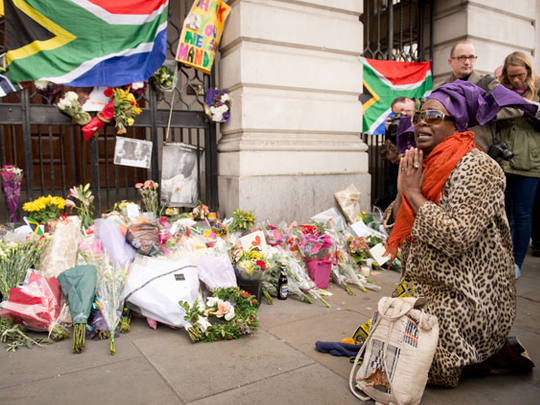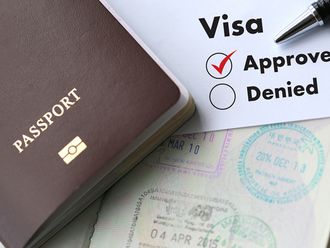
Dubai: Hamba Khahle, Umkhonto we Sizwe — Farewell, Spear of the Nation.
For generations these have been the words South Africans sang as they laid to rest those freedom fighters who had died in the struggle against apartheid.
For those who were at the receiving end of apartheid, Nelson Mandela will always be a freedom fighter, though in his later years Nelson Mandela was revered as a peacemaker and a statesman.
There were political and community campaigns to oppose almost every apartheid law – from segregated beaches to restrictions on the press. But the central demand was: Release Mandela — even from those who did not support the ANC. He was the unifying force among the majority of South Africans, even as the then government stepped up its efforts, many times successful, to divide them.
Once, facing a death sentence for launching an armed struggle against apartheid, Mandela told the court:
“I have fought against white domination, and I have fought against black domination. I have cherished the ideal of a democratic and free society in which all persons live together in harmony and with equal opportunities. It is an ideal which I hope to live for and to achieve. But if needs be, it is an ideal for which I am prepared to die.” Those words were marching orders for young South Africans for the next 30 years.
With his picture banned, a silhouette of an ageless Mandela was used to encourage defiance of apartheid and build support for the African National Congress (ANC) and its armed wing, Umkhonto.
Across the country, young South Africans confronted police singing, “Mandela wants soldiers. He is our leader, we are his soldiers”. Protests and demonstrations often ended with teargas, bullets and even death. But that did little to deter people from the next protest or demonstration. Parents told their children about their leaders who were locked-up on Robben Island, the prison that Mandela spent 18 years of his 27 years’ jail.
Throughout the 1980s, as Mandela’s stature as a leader grew, so did anger against the apartheid. In 1990, the regime cracked.
Mandela deftly steered the ANC and South Africa through years of tense negotiations. There were massacres, assassinations, anger and the fear of civil war. There was also good will, common sense, political maturity and compromise.
In some ways the greatest difficulty he faced was persuading Black South Africans to keep his faith in a negotiated end to apartheid. His release had unleashed great hope for the future, but as the transition became marred by political violence, popular anger threatened the political process.
The young South Africans who had pushed the apartheid regime to the breaking point wanted the freedom fighter, but Mandela had become a national leader and a statesman. He was able to use his immense political and moral authority to push all sides to make — and accept — the necessary painful compromises.
“Madiba magic” referred to his gift for winning over almost anybody. He went out of the way to win over the white community in South Africa, but took Black South Africans with him, despite of some disapproval.
For many South Africans the day Mandela was released was their first taste of freedom. What for so long had seemed a distant hope, became a reality that was celebrated by young and old.
Until Mandela’s release, a life of hardship and an increasingly bitter political struggle seemed inescapable for many. But after his release, an end to apartheid and opportunity for “a better life for all” seemed inevitable.
In April 1994, South Africa held its first democratic election and Mandela became president. South Africans nervously pondered how to reconcile black expectations with white fears; and politicians and officials got on with the slow, messy and often disappointing day-to-day work of rebuilding the country, Mandela began reconciling the nation.
Mandela rallied the country behind the 1995 Rugby World Cup campaign by the South African team, the Springboks. The tournament — and the Springbok victory — brought South Africans together and showed them that they had enough in common to become a nation.
At the end of a single term as president, and a lifetime as a leader, Mandela retired from party politics. South Africa was by no means the idealistic “Rainbow nation” it was portrayed, but Mandela knew the country could not remain dependent on a single man — no matter how much more than that he had become to the country and the world.
Paul Stober was a journalist in South Africa between 1991 and 2008











